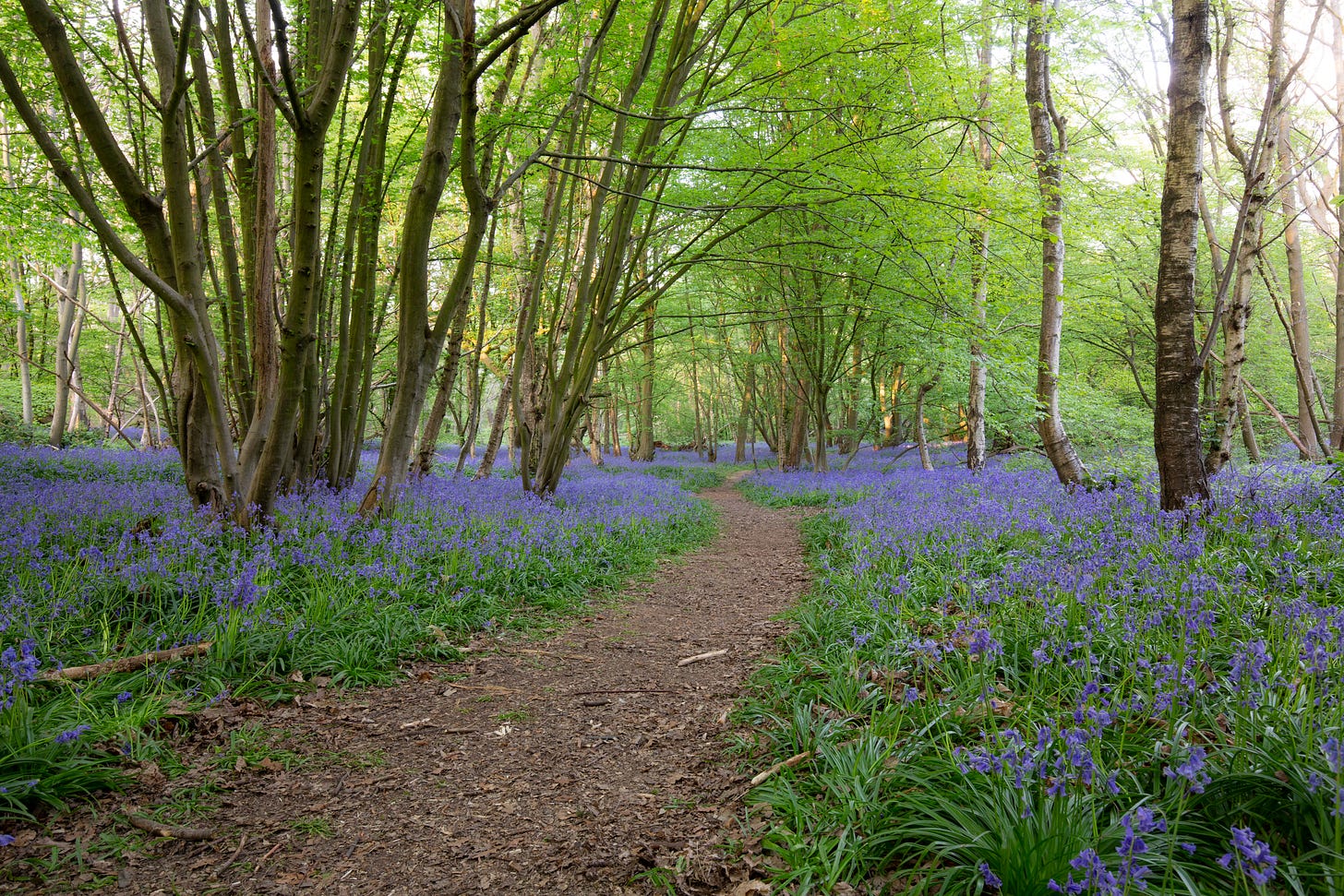The Bluebell Wood
Wondrous sights and unexpected encounters in the Bluebell wood - the quintessential British springtime spectacle
A short drive away from my home, through the red-brick road of Stock Harvard (with its preponderance of old houses buttressed close to the road), one needs to turn down a narrow school lane to arrive at the spectacle. With the advent of springtime, the members of the Turner household start to get twitchy and impatient — akin to how passerines feel before they migrate — for we know that the emergence of beauty is imminent — and we don’t want to miss it. So, come the second week in April, we take this short drive to Swan and Cygnet Woods1, our annual pilgrimage to the ephemeral festival of spring: the emergence of the bluebells.
A week or two earlier, and the woodland floor in this relatively small wood2 looked very different. Small white stars, casting their petals up to the heavens, dotted the floor like miniature constellations. These were wood anemones, beautiful in their own right, but a mere shadow of the spectacle which was to come. Wood anemones are some of the first flowers to emerge in spring, declaring as they bloom that the deathly ravages of winter are finally over — or at least we hope so, for late frosts at this time of year are an orchardists worst nightmare.
Like any good and fitting prelude, the wood anemones fulfil their duty, setting the stage and getting the audience ready for the magnificence of the imminent grand finale. For it is the bluebells who steal the show of the forest, while the dying embers of the white starlets fade away. This is a spectacle that thousands flock to see every year; for in the briefest of moments in the woodland calendar, another colour (and a rare one at that3) is added to the dual brown-green palette of the British ancient woodland — a profusion of lilac-blue bells carpet the woodland floor as far as the eye can see. It is sublimely beautiful — and unique. No other member of the British floral community flourishes with such intensity, density, and sheer mass as the bluebell, and few other flowers put on a show that rivals them. The rest of the country appears to agree with me, for when the nation was polled as to our favourite wildflower, the bluebell took top spot.
The woodland I am in is one of two halves. I am not talking about the narrow country lane which bisects this woodland from the neighbouring Hankins Wood, though that certainly gives the impression of two separate woods. The greater, more fundamental division is ecological. The clue is in the name of the wood: Swan and Cygnet Woods. Cygnets are young swans; it doesn’t take a detective then to deduce that Cygnet Wood is therefore the younger of the two woodlands. It is a recent plantation, an add-on to serve as a buffer to protect the ancient semi-natural Swan Wood — a reversal of the natural order of nature where the older protects the younger. You can tell by just looking at it that Cygnet Wood is younger. Absent are bluebells and the richer floral understory of the directly neighbouring Swan Wood. As is always the case in nature, when there is a pattern, there is a reason. The complete absence of bluebells hint that something crucial is missing from Cygnet Wood…
Keep reading with a 7-day free trial
Subscribe to Over the Field to keep reading this post and get 7 days of free access to the full post archives.



